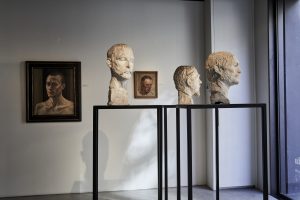0 results
Biografia
Eduardo Rosales Gallinas is one of the leading figures in 19th century Spanish art. Most of all, he was admired as a talented, original and independent painter who renewed the genre of historic painting and thus significantly changed the course of all 19th century Spanish painting, shifting it away from academic purism towards the realism of Velázquez’s work.
Born to a humble family from Madrid, Rosales was orphaned at an early age and grew up alone in the capital. He studied at the Academy of Fine Arts of San Fernando, and in 1857 he left for Italy. During his early years in Italy, Rosales focused primarily on Nazarene purism, and that influence is still visible in his first important work, Tobias and the Angel (Madrid, Museo del Prado). He soon grasped that this artistic vocabulary was in crisis, and shifted towards a more naturalist realism that led him to concentrate on depictions of Italian types. His mature work, however, involved developing a pictorial language that was to renew mid-19th century artistic practice. His familiarity with the realist approach of Italian and French academic painters of his generation was crucial, but the language he developed for himself drew strongly on the Spanish Siglo de Oro tradition, especially Velázquez.
He recognized the impossibility of earning his living with historic paintings and began to focus on two genres that he almost certainly considered minor, as he painted them with less enthusiasm than his major history works like The Death of Lucrece (Madrid, Museo del Prado), on display in the National Exhibition of 1871: these formats were portraiture and small-format depictions of everyday events in historical settings.
The genre of the portrait proved to be fruitful because the artist received numerous commissions by socially relevant figures such as the Duke of Fernán Núñez, the Duke of Bailén, the Countess of Via Manuel, the Marchioness of Salinas, Viscountess of Rías…Or illustrious politicians such as D. Cándido de Nocedal, D. Manuel Cortina, D. Antonio Ríos Rosas, or the eminent Dr. Don Vicente Asuero or the daughter of General Serrano, Conchita Serrano, Countess of Santovenia.
Towards the end of his life, Rosales also became increasingly interested in outdoor landscape painting, which helped him through numerous long periods of convalescence in the port of Panticosa, as well as two stays in south-eastern Spain. During his final years he also made large decorative compositions, including two for the Marquis of Portugalete’s palace -now lost- as well as for the spandrels of the church of Santo Tomás in Madrid, which represent the four evangelists. He was unable to complete this latter work before his premature death.
